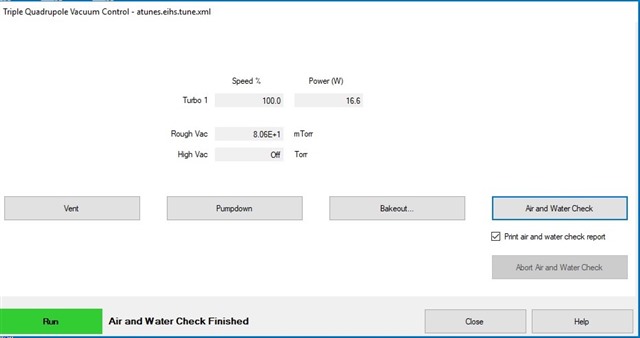Hello,
I am using a 7010B GC-MS TQD and when I perform the air/water check in the morning everything looks good i.e H2O, O2, N2 reading all below 5%. But when I perform a 2nd and 3rd air water check the water readings jump to around 13% H2O and I notice the high vac is set to off. How come did high vac is shutting off on its own? I realize it is suppose to be around 10e-5 Torr for the high vac and around 100 mTorr for the rough vac.
